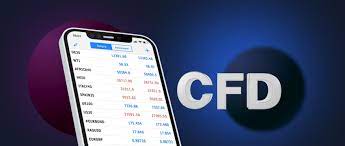
Unlocking the Potential: The Ins and Outs of Cfd trading
For those venturing into the world of financial markets, the term Cfds, or Contracts for Difference, often emerges as a prominent avenue for trading opportunities. But what is cfds, and how can traders unlock their potential in the dynamic landscape of financial instruments?
Cfds, or Contracts for Difference, are derivative instruments that allow traders to speculate on the price movements of various financial assets without actually owning the underlying assets. This unique feature provides traders with the opportunity to profit from both rising and falling markets, making Cfds a versatile tool in the trader’s toolkit.
One of the key aspects that define what Cfds are is the concept of leverage. Leverage amplifies the exposure to the underlying asset, allowing traders to control a larger position size with a relatively smaller amount of capital. While leverage can magnify potential profits, it also increases the level of risk, making risk management a crucial component of successful Cfd trading.
The ins and outs of Cfd trading involve understanding the mechanics of how these contracts work. When traders open a CFD position, they are essentially entering into a contract with the broker. The profit or loss is determined by the difference between the opening and closing prices of the underlying asset. This mechanism allows for quick and flexible trades, as Cfds are often traded on margin, enabling traders to take larger positions with a fraction of the total value.
Risk management strategies play a pivotal role in navigating the ins and outs of Cfd trading. Setting stop-loss orders, defining risk-reward ratios, and employing other risk mitigation measures are essential to protect capital and ensure a sustainable trading approach.
In short, unlocking the potential of Cfd trading involves understanding what Cfds are and how they operate in the financial markets. With their unique features, including leverage and the ability to profit in both rising and falling markets, Cfds offer a dynamic and versatile trading experience. To navigate the ins and outs successfully, traders must combine their understanding of CFD mechanics with effective risk management strategies, ultimately unlocking the full potential of this derivative instrument in the world of finance.